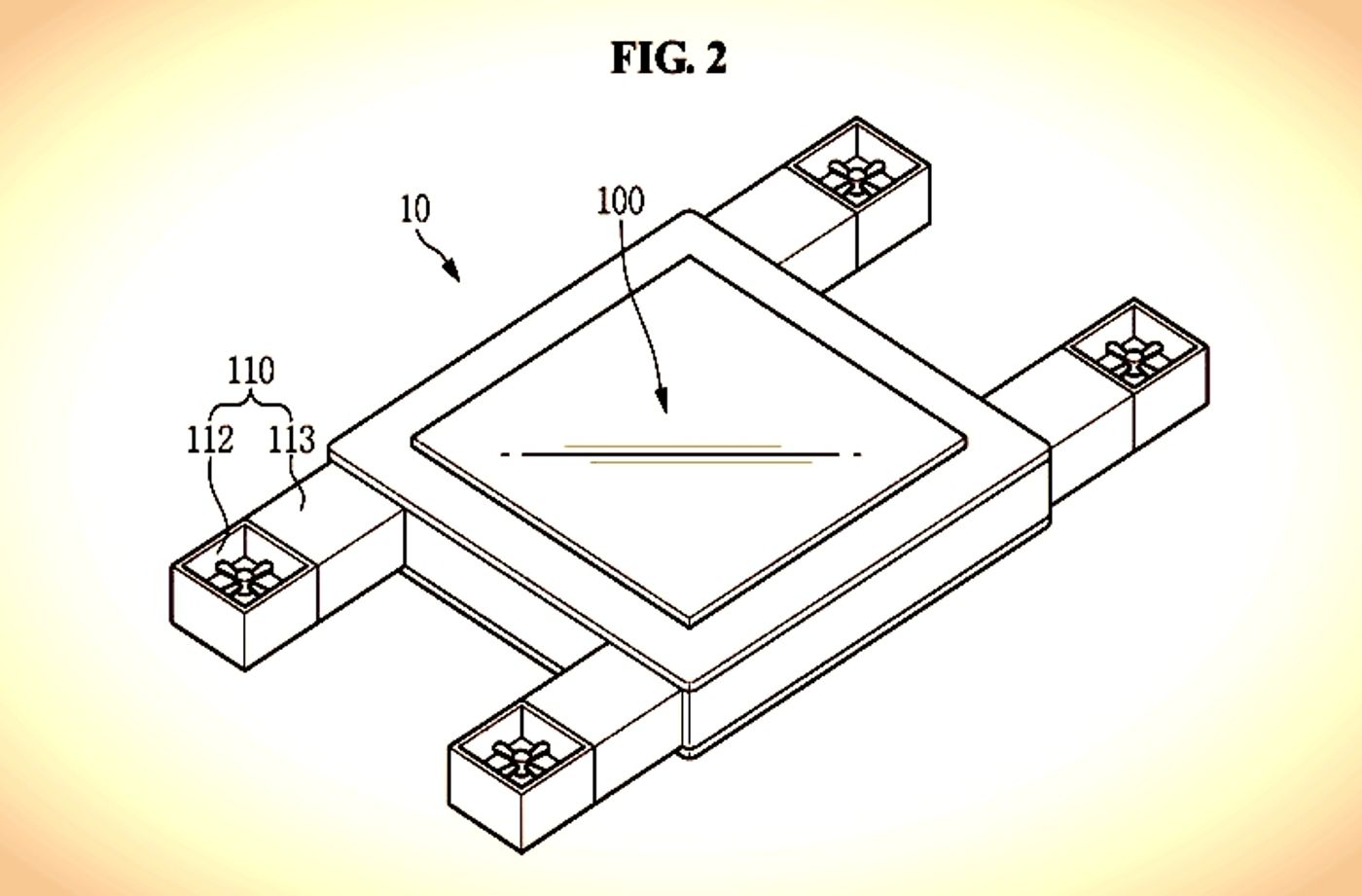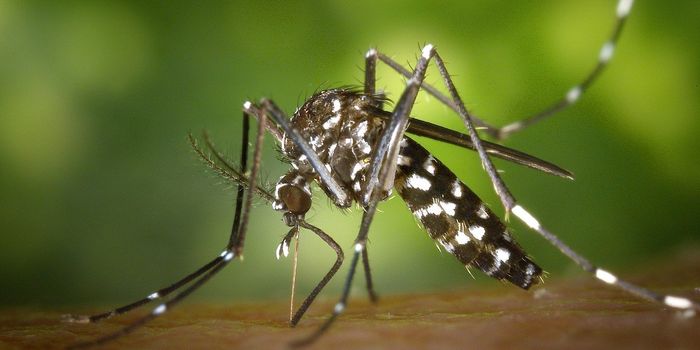Samsung Patents Drone-Like, Flying Display Screen
Samsung has received a patent for a unique type of display screen – one that can hover, move and tilt, not unlike a drone. The South Korean company and international electronics giant applied for the patent titled, “Flying Display Device” on Jan. 3, 2016 and was awarded it by the U.S. Patent and Trademark Office on Feb. 13, 2018. This airborne invention would theoretically allow a screened device to fly and to follow a user around, tracking and staying in line with their gaze. An image from the patent document is below, showing it’s quad-rotor design (having four rotating parts), reminiscent of many contemporary drones. The patent was first reported by the Dutch website LetsGoDigital.
The patent text explains that a typical “fixed screen of a fixed-type liquid crystal display (LCD) device,” which we currently use when viewing screen content, limits image display options, including “position, angle and the like.”
“Exemplary embodiments of the invention are directed to a display device capable of changing an angle thereof based on a gaze of a user while moving along with the user by automatically tracking the user, without an additional operation performed by the user,” it goes on to explain. So, a device could follow a user around and match their gaze without any conscious effort on the user's part.
The object would have a “joint manipulator” to adjust the angle of a screen during flight. The content-sharing device held by the hovering structure could be a tablet, laptop or other screened machine. The flying invention reportedly might include senses, controls and features like a camera, power source, accelerometers, gyroscopes, motion sensors, Wi-Fi, GPS and voice control. In its “exemplary embodiments,” it could track a user’s face, hand, eye, or finger orientations and movements, suggesting some conscious control by a user might be possible as well. An obstacle detection and avoidance system is also mentioned.
As Mallory Locklear of Engadget pointed out in relation to this device and experience, it could be fun if you wanted to watch a program of your choice while in motion or invasive if a company used it to display content that you did not choose to see. The “Flying Display Device” might be useful for cooking while watching a how-to video or frustrating if a flying advertisement was targeting you on you way into work.
The quad-rotor setup in the drawing mimics the quadcopter design popular in many contemporary drone models. Drones have also been designed for food and beverage delivery, emergency response situations, to combat animal poaching and in other novel ways in the past few years. Whether or how Samsung will develop and implement this patented invention remains unclear, but it seems likely that the presence of flying devices in our personal lives and air space will be increasing in the future.









